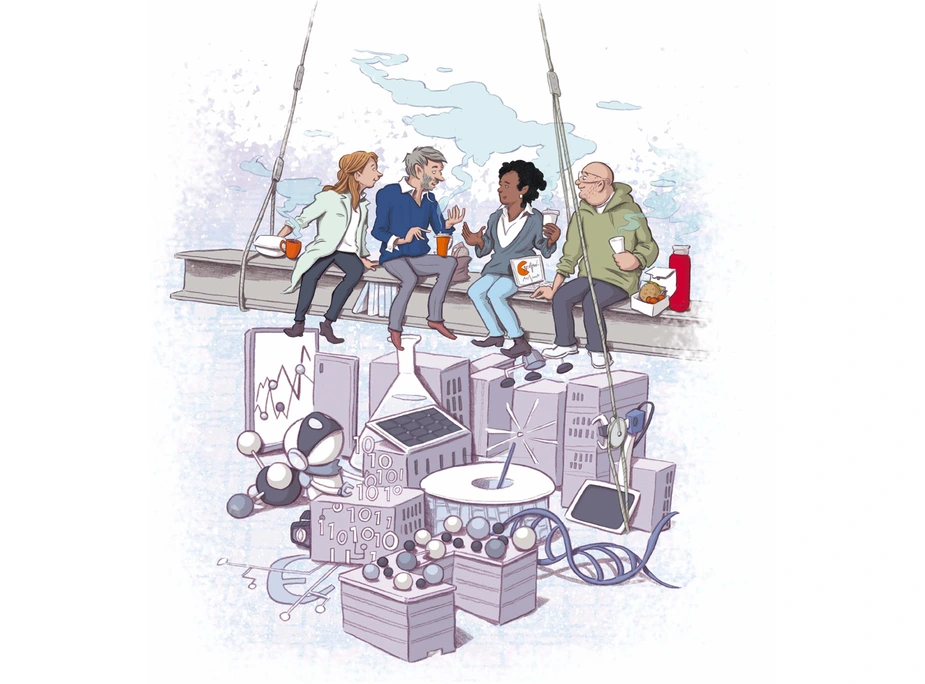Adlershof puts you in a good mood: Why kitchenettes and water coolers are vital places for high technology
Essay by Joachim Fahrun, chief reporter at Berliner Morgenpost
“Adlershof?” said my chief editor. “That’s a bit overcovered.” In the early 2010s, many people, including me, had reported so much on the Technology Park in Berlin’s South East that some eager media consumers thought it a bit much. Even an industry that fights for attention can grow a tired of success stories. It’s not exactly news anymore that Adlershof is booming.
In 2004, this was different. Back then, Berlin was in a state of crisis. The city senate had rented spaces at Adlershofer Tor, a new office building for 15 euros per square metre. But the offices stayed empty. The investors demanded rental guarantee, otherwise they would have just turned it into a supermarket. However, Berlin’s government and the Adlershof developers wanted urban, multi-storey buildings on Rudower Chaussee and the project was subsidised with sometimes questionable means.
Those were the type of things the public was hearing about Adlershof at the time. In the city’s far west, people had no idea what was going on out there, just outside Cottbus, as they saw it.
This changed in the years that followed. I met researchers from the defunct East German Academy of the Sciences who became entrepreneurs and did very well indeed. I reported on “Chinese growth rates” in the Technology Park at a time when venture capitalists weren’t yet showering downtown online companies with millions of euros. I wrote about the renaissance of optical technologies and the unshakeable resilience with which the tinkerers from Adlershof defied the global financial crisis in 2008. I liked that these people had nothing to do with the agitated executives and PR people I frequently had to deal with. Of course, I was also worried that I was incapable of understanding what these people were talking about. If I don’t get it, I thought, my readers wouldn’t get it either. They all made an effort to make me, a layman, understand what their products were about.
After visiting their companies and institutes, I always got back on the S-Bahn with a good feeling. Nobody ever moaned about politicians, the government, or the municipal business promotion. “These people are just doing their thing”, I thought. They realise that they are able to do things that most people in the world know nothing about. This gave them a laid-back self-assurance that could afford to leave out the pompous speeches and status symbols. And the fact that millionaire entrepreneurs discussed the dark side of the capitalist system was something that also only happened in Adlershof.
Then, in 2010, the expansion of the Adlershof idea entered a new stage. The Technology Park was growing and, despite setbacks like the demise of local solar companies, was becoming sure-fire success from the perspective of WISTA, the site’s operating company. They started launching the same concept in other parts of Berlin. This worked well in some places and not so well in others. However, it is now clear where Berlin’s politicians go when they are bent on developing further high-tech locations. They were given a demonstration how university spin-offs work and how innovative companies come out of the connection with science. I learned that kitchenettes and water coolers are crucial for this to come about. Because they are where creative people meet, talk, identify things they have in common, and discover that their skills could complement each other. It cannot be covered often enough that even high technology is pushed forward in this old fashioned and analogue way.
